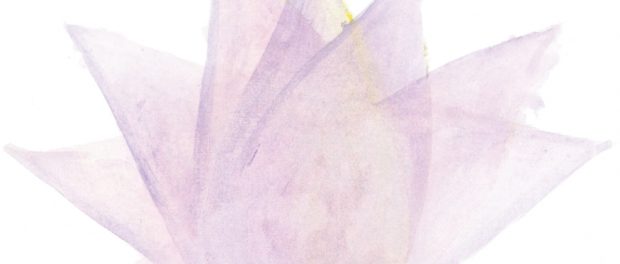Cultivating peace within ourselves
An introduction to mindfulness for educators

Over the past several years, there has been a sharp increase in the number of anxiety-related diseases and diagnoses. All of us involved in the education system have witnessed first-hand the impact of anxiety in our offices, our classrooms, our schools, and in our communities. We are gradually waking up to the fact that problems like stress, anxiety, and depression are becoming epidemic.
Self-regulation is a skill that we talk about, especially in relation to student behaviour, but we often miss a key component of self-regulation—the ability to recognize our own mental states and to find positive and self-nourishing ways to respond to these states. When we get stuck in the “flight or fight” response to stress and change, we often lose ourselves in the moment—a reaction which jeopardizes our integrity, our dignity and our overall mental well-being.
Mental health, like physical health, is something we need to make time for on a regular basis and mindfulness is a way we can frame this intention. Mindfulness teaches us ways to stay present even in the most stressful moments—to stay grounded and to observe the changing nature of our feelings.
The most widely used definition of mindfulness comes from Jon Kabat-Zinn, Professor of Medicine and creator of the Center for Mindfulness in Medicine, Health Care, and Society. Zinn describes mindfulness as the means of paying attention in a particular way: on purpose, in the present moment, and nonjudgmentally. To be ‘in the present moment’ means that whether we are writing on the board, walking in the hallway, listening to a colleague or at home washing the dishes, we are focused and concentrated on that physical experience alone.
Although the practice sounds simple and accessible, it requires the quiet determination to be present and to stay present—an act that, when repeated, begins to hard-wire our brains to be responsive rather than reactive—moving away from the “fight or flight” response that keeps us stressed and defensive.
Cultivating compassion and peace within ourselves and our world is the ultimate aim of mindfulness practice, and we begin by taking care of ourselves by slowing down, by listening attentively to ourselves and others, and by observing our own fragility and strength compassionately.
Meditation is a key practice of mindfulness. As we sit quietly, the natural and quiet rhythm of our breath is the tool we use to stay present. As thoughts and feelings wax and wane, we note them and return to our breath. We bear witness to our emotions without judgment and with compassion for our own physical and mental experiences. Meditation is not about emptying our mind, nor is it about mulling something over. It is about observing what is going on with openness and curiosity. When we notice our mind is wandering, we refocus on our breath. And we repeat this over and over.
Beginners may not find this process an easy one. Sometimes focusing on our breath brings a heightened awareness of how anxious we are—our breathing might be irregular and shallow and this might bring us initial discomfort. This is by no means a sign of failure. Rather, it is concrete evidence of the good work we are doing to rewire our brains.
When we practice mindfulness meditation with regularity, we learn to stay grounded and fresh in spite of the sudden storms we might encounter. Ten to twenty minutes of daily meditation for eight weeks is shown (using MRIs) to change our brain physically, leading to better concentration, focus and improved decision-making.
In the UK, the All-Party Parliamentary Group on Mindfulness established a program of mindfulness classes in Parliament attended by 115 Parliamentarians and 80 of its staff. The group has just published its findings, concluding that mindfulness “is an important innovation in mental health which warrants serious attention from politicians, policymakers, public services in health, education and criminal justice as well as employers, professional bodies, and the researchers, universities and donor foundations who can develop the evidence base further.”
It is recommended that any one interested in using mindfulness in their classrooms or schools first start with their own practice. In the daily rush and tumble of doing our jobs, we can get caught like a kite in the wind and so can the students and broader community that we serve. In reality, we can take things at a much slower pace—an act that can quickly transform our work, our teaching and our schools.
Ask anyone who’s been practicing mindfulness if they wish they started earlier in life. The answer will be a resounding “Yes!”

Documented benefits of mindfulness:
- reduces insomnia, improved quality of sleep;
- helps a variety of medical conditions, including cardiovascular disease, asthma, type II diabetes, PMS and chronic pain;
- mindfulness reduces anxiety, depression and stress;
- increased emotional regulation;
- increased social skills;
- increased self-esteem;
- increased concentration and focus;
- increased working memory and planning and organization;
- increased sense of calmness, relaxation, and self-acceptance;
- decreased ADHD behaviors—specifically hyperactivity and impulsivity;
- decreased negative affect/emotions;
- fewer conduct and anger management problems.
Found on www.DiscoverMindfulness. ca and www.mindfuleducation.org/research.

Thank you for this article. A colleague and I established a Mindfulness Club at our high school after attending the Mindfulness in Education Retreat at Blue Cliff Monastery. It was amazing to watch our high energy students take time to be still and reconnect with their breath and their selves. Bravo ladies!